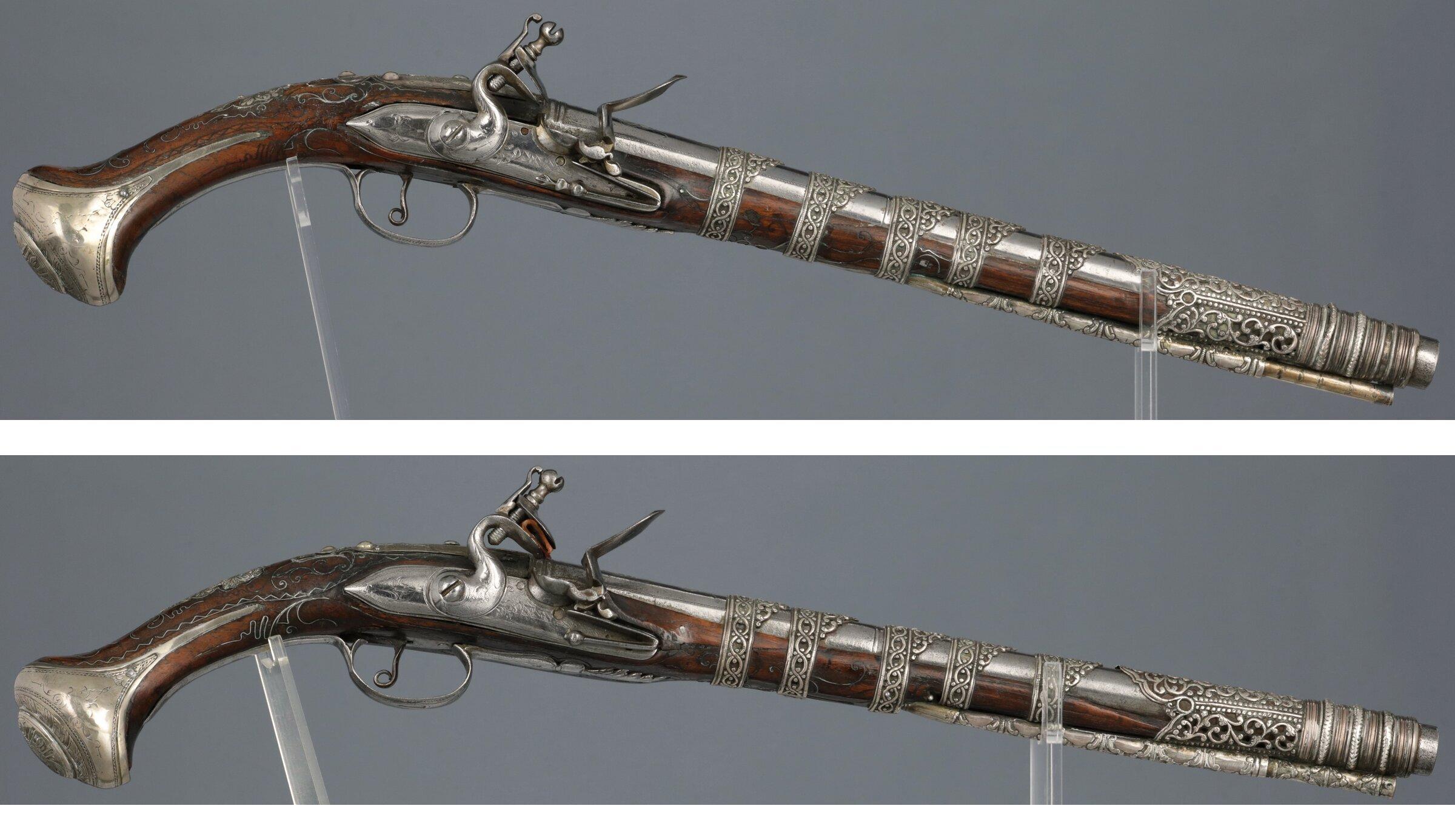Recently I translated a bit of a book that I figured would be of interest to some here. Specifically relevant to Ottoman Guns, accessories, and typology in the Eastern regions, more specifically among the Armenians of Sasun. The neighboring Kurds and Assyrians also existed in a common cultural space, so more likely than not the bigger picture applies to them as well.
"The main weapon of the Sasunian was the Chakhmakhli (Miquelet Lock) musket. Chakhmakhli muskets, which the locals called Tv@ng, had several names according to their type. Majar, Shashkhan, Tersmi, Stampuli, Nahvlu, etc etc. They were to various degrees of long, short, or medium length. The diameters of the barrels were different as well. As such, the Stampuli's barrel was 15 millimeters in diameter, took three direms of black powder and a big ball, while the other types had barrels 12 millimeters in diameter, took from 1.5–2 direms of black powder, and were loaded with smaller balls.
The parts of the muskets were named lula (Barrel), vet or ghondagh (Butt), abrjan (The part connecting the barrel to the stock), nshanga (Sights), chakhmakh (Miquelet lock), the cushion of the tez (?), and the shish and ghayish (Gun container and sling).
Auxiliary items included the shshmat (wooden ramrod), darb@nks (cartridges), and a leather cartridge pouch, in which cartridges with enough black powder for one shot were lined up, whose openings were closed with cloth corks, so that the powder would not fall out if the user was making fast movements. The corks were tied up with leather strings to keep them secure.
To have black powder ready at hand, it was poured into a flask made of a water buffalo's horn or hard wood, which was decorated with ivory, mother of pearl, and silver thread. The backside was thick, while the front was thin and curved. A strong steel mechanism was attached, whereby upon squeezing it the hole for powder would open up, and by letting go it would close.
The direm was a cylindrical measuring device made of yellow pig iron, in which a long square-shaped metal bar was attached. The bar was moved back and forward, and stopped when it reached the level corresponding to the load taken by a given musket. The correct load was then poured into the darb@nks, and if necessary into the gun itself. 50–60 ready-made lead balls and extra flints were kept in the Gluli javd (A closed leather bag). As decoration, thin and long tassels were hung from the bottom of the javd.
When arming himself, the Sasunian would tie the cartridge pouch to his back, then the Javd bag and the powder flask would be worn from the left shoulder, ending up under the right arm. The dagger was worn on the right side of the belt, while the sword was hung on a belt from the right shoulder ending up under the left arm. All of that together made up the armament of a Sasunian."
-Eghizar Karapetyan, "Sasun: Ethnographic Materials).
Below is a photo of a man from Sasun with all his armament. You can see the details match very well with a lot of the stuff described above, although he has some extra weapons (A shield and an axe. Although the excerpt above says they were armed with only a dagger, gun, and sword the axe and shield are well documented in other literature). I also didn't get where some of the stuff like the bag is.










































